How to See the Art of Pompeii at the National Archaeological Museum in Naples
This post may contain affiliate links to products or services I'm happy to recommend. If you click on an affiliate link and then make a purchase, Artsy Traveler may earn a small commission at no cost to you. Thank you!
Naples has long been on my list of places to visit, mostly because I wanted to tour the Museo Archeologico Nazionale di Napoli aka the National Archaeological Museum of Naples aka MANN, and then visit Pompeii.
Both Gregg and I had visited Pompeii twice each–Gregg in 1958 when he was eleven, me in 1974 when I was 18 and then together with our daughter in 1994. In all those trips, we’d never managed to visit the National Archaeological Museum in Naples. We came close in 1994 when we took a taxi from our hotel to the museum on our way to Pompeii only to find it closed. In those pre-Google days, I’d neglected to read the guide book.
So we were determined to finally see MANN because we’d heard that it housed the vast majority of the art excavated from Pompeii and Herculaneum.
See the National Archaeological Museum of Naples First!
Now that I’ve toured MANN, I can without hesitation recommend that you go there first and then tour Pompeii. As you’ll discover, Pompeii is pretty much all ruins (quel surprise!) with the vast majority of the frescoes, mosaics, and statues long ago removed to the National Archaelogical Museum in Naples.
Also, to be honest, wandering around Pompeii in the heat (we visited in late April and it was 30 degrees) with thousands of other visitors is not as comfortable an experience as strolling through room after room in the thoughtfully air conditioned museum.
Overview of the National Archaelogical Museum in Naples
So let’s get started! In this post, I’ll share some of my favorite parts of the National Archaelogical Museum in Naples (MANN) with the proviso that the museum is chock-a-block with amazing objects. I’ve rarely seen such a beautifully appointed museum where just about every item in it was worth a stop and a good long look.
MANN is large, but not overwhelming. You can easily tour it in about two to three hours, depending on your energy level. MANN also has a cafe so you can take a break for refueling after touring a floor or two. We did, and it made all the difference to our enjoyment of the museum.
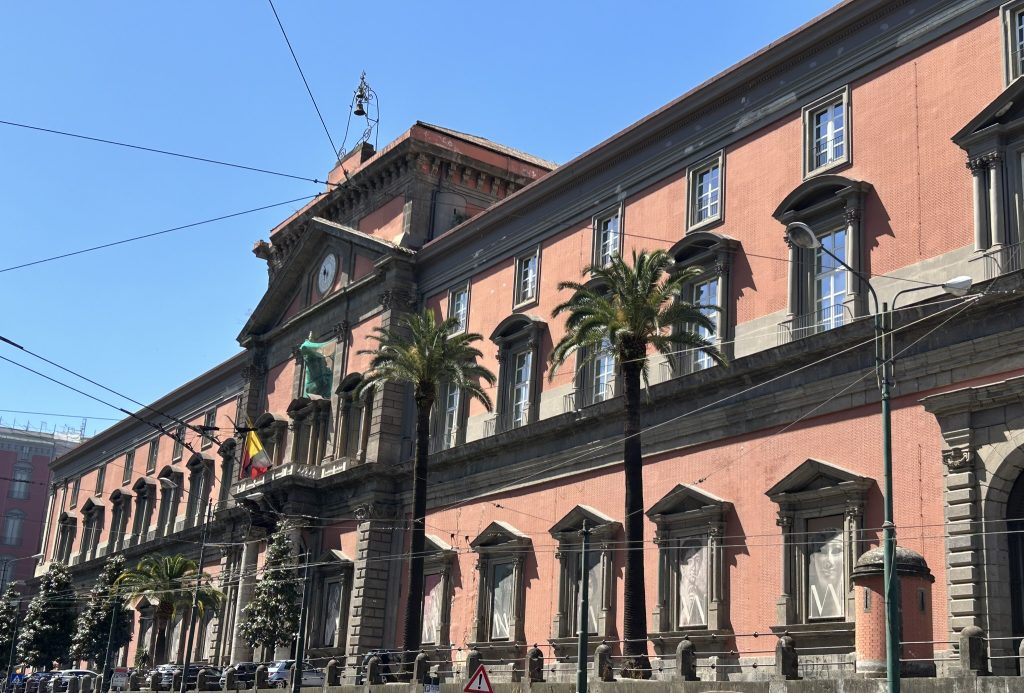
When we toured MANN in late April, the crowds were light (unlike the next day in Pompeii!) and we waited only a few minutes to buy tickets. In busier times of the year, you may want to skip the ticket line by buying your tickets online from the museum’s website or through resellers such as Get Your Guide.
Plan of Attack
The museum is organized according to type of art, so you’ll find rooms full of sculptures, mosaics, everyday objects salvaged from Pompeii, frescoes, and coins. We saw most of what was on display in the sculpture, mosaic, everyday objects, and fresco areas. The quality of the work is awe-inspiring.
I suggest starting with the sculptures on the ground floor and then going to the top floor and working your way down. We find doing so minimizes stair climbs (there’s an elevator to whisk you to the second floor) and conserves energy.
Sculptures
Start with sculptures because they are the first things you see when you enter the museum. Wowza! They are stunning. I didn’t expect to see so many really large sculptures that looked like they were chiseled yesterday when in fact they were almost 2000 years old.
Here’s a selection of my favorites.
Hercules at Rest
Even big guys like Hercules can use some time off now and again. This massive sculpture of old Herc shows him leaning on his club. The sculpture is a Roman copy from the end of the 2nd/beginning of the 3rd Century CE of a Greek statue from the second half of the 4th century BCE. The subject of Hercules at rest is a very popular one. It shows him exhausted and pensive after having undertaken yet another labor for his cousin Eurytheus.
While the top half of Hercules sags with fatigue, his legs and feet still look dynamic, as if he was ready to spring into action (yet again) at any moment. The sheer size of the statue took my breath away–and it’s just one of many dozens of sculptures in MANN.
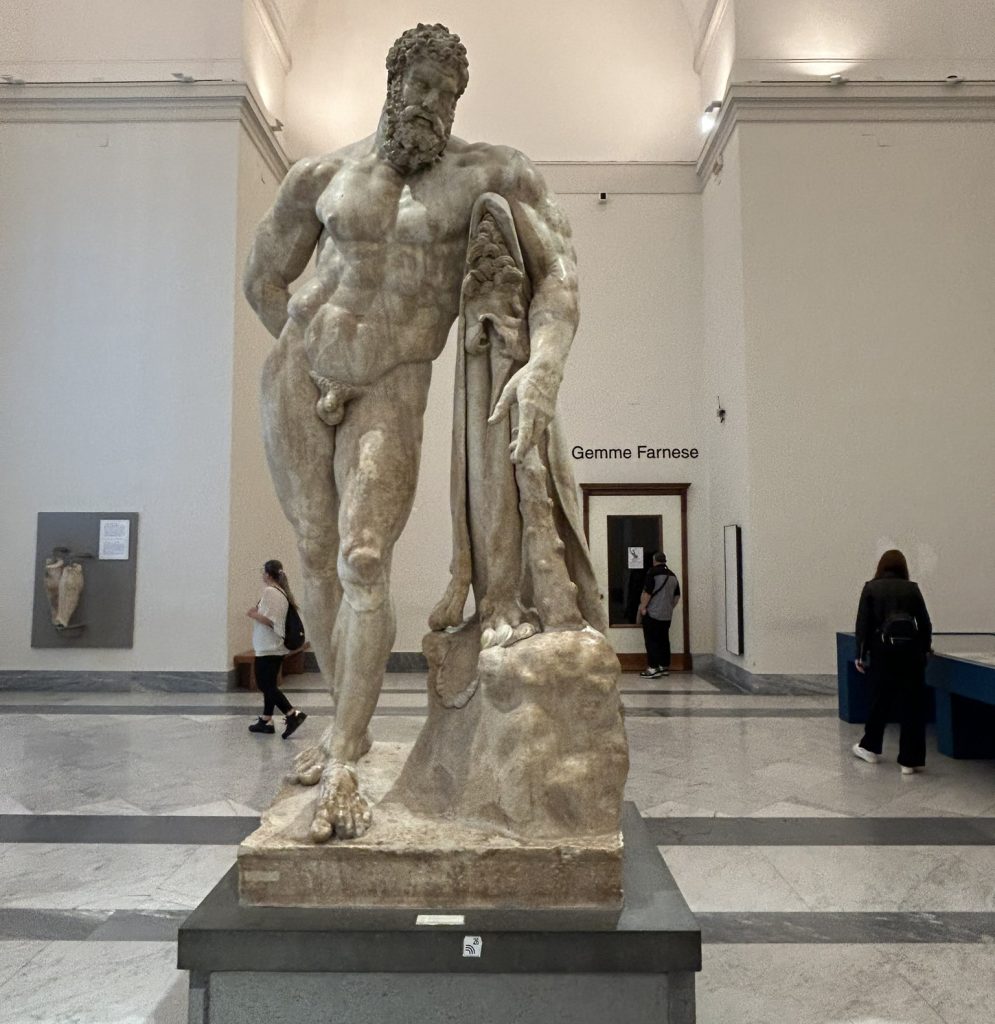
Dog Sculptures
Large sculptures dominate the rooms, but they are by no means the only sculptures worth admiring at MANN. Here are three incredibly charming sculptures of Roman pooches. They look like they could come to life at any minute and run toward you, tails wagging.
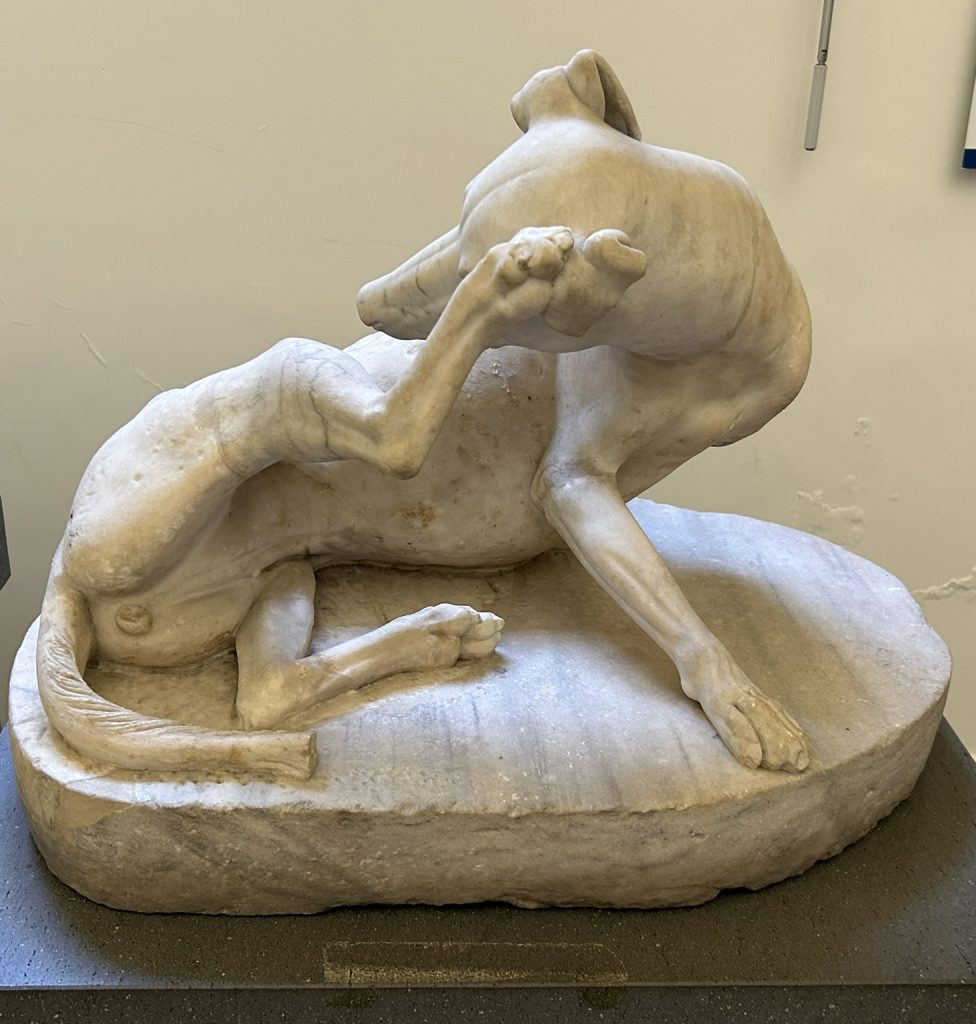
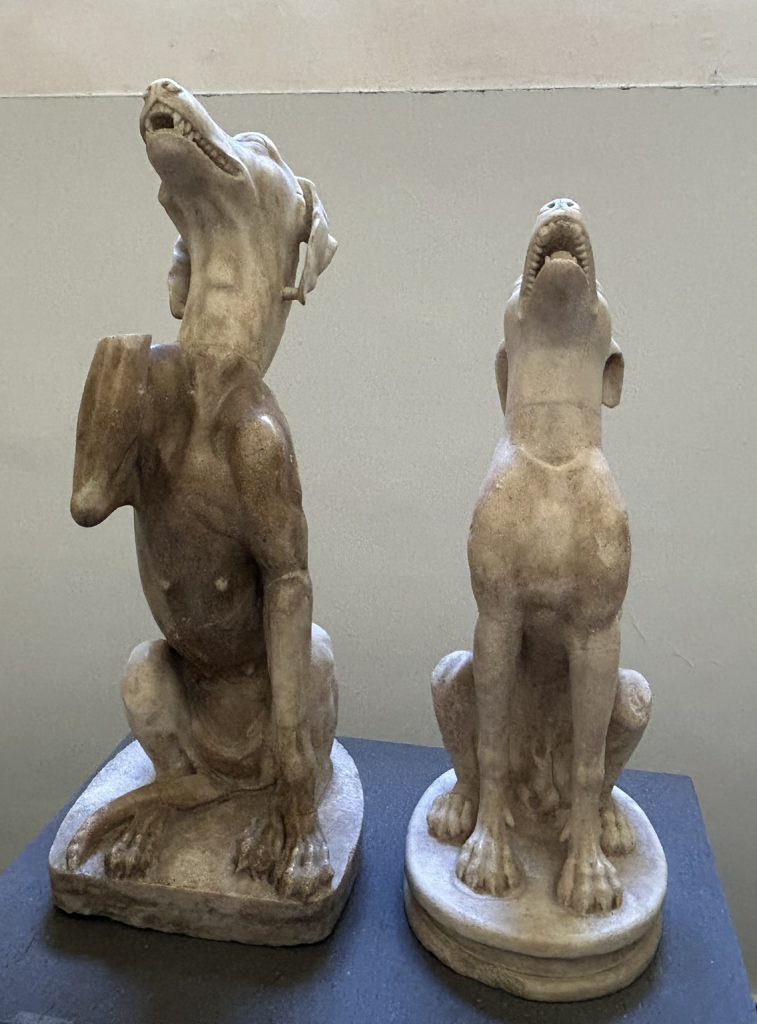
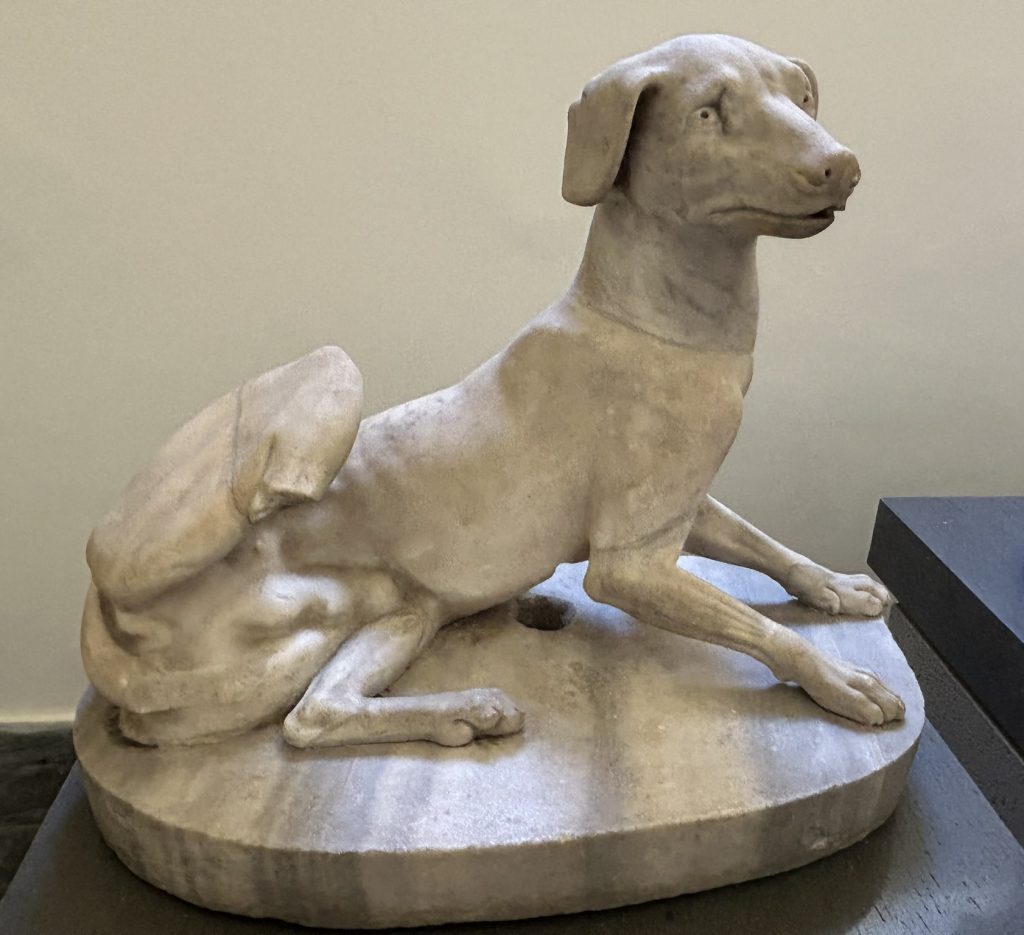
Athena
Athena is the Goddess of Wisdom, along with warfare and handicrafts. The next time you pick up a knitting project, call on Athena for some extra guidance! This sculpture (bigger than can possibly be portrayed in a photo) really shows off Athena’s robes in all their pleated glory.
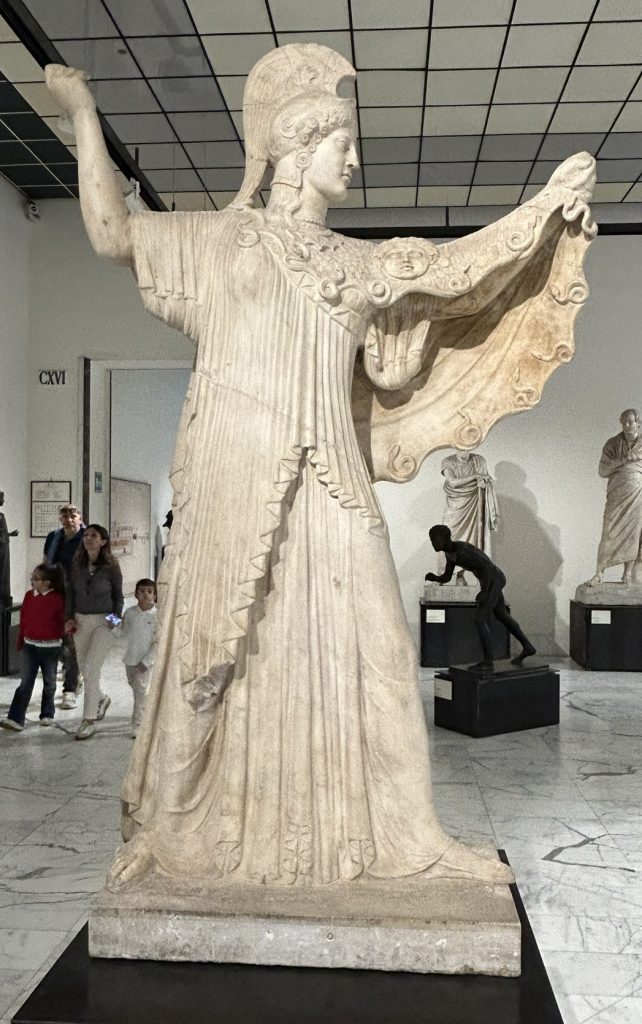
Bust of a Woman
I don’t know who this is but I love her hair! At least I think the bust is of a woman’s head. She looks a bit careworn, perhaps from having to cope with all those corkscrew locks every day. I also loved the black stone used–an interesting break from the predominantly cream-colored marble used to create most of the other sculptures in MANN.
It’s hard to believe this sculpture dates back two millennia. Like most of the sculptures in MANN, the bust is in near perfect shape.
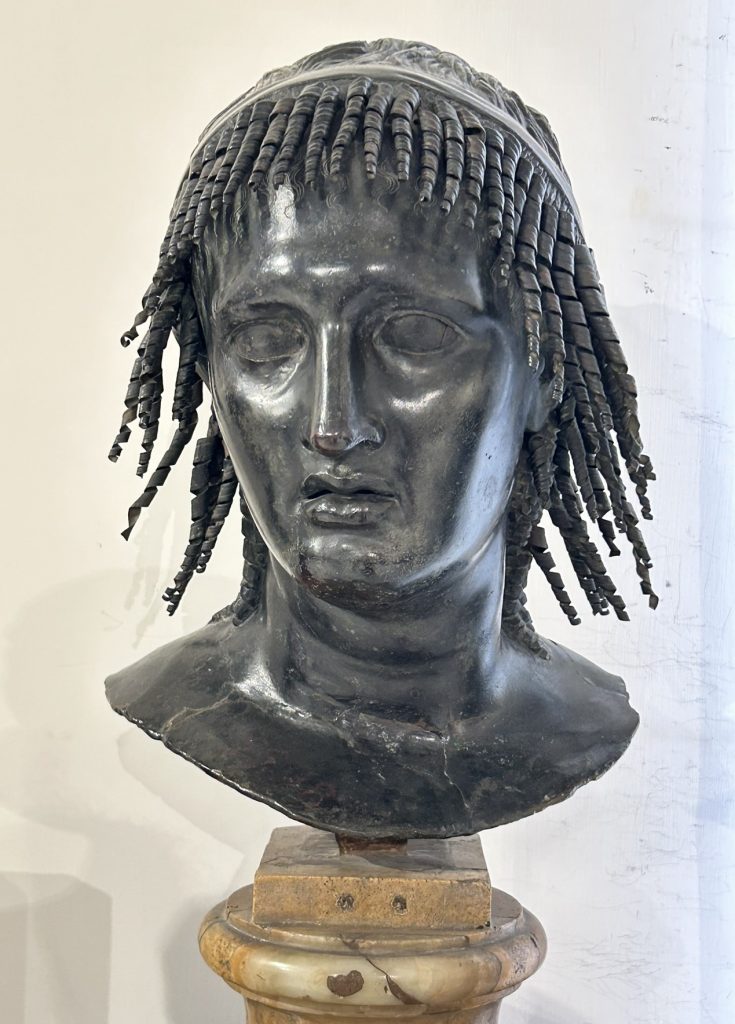
Petite Figure
This small statuette of a child is one of several equally adorable pieces. You can understand how the artists descended from the ones who sculpted these pieces came up with cupids! The pieces look incredibly lifelike.
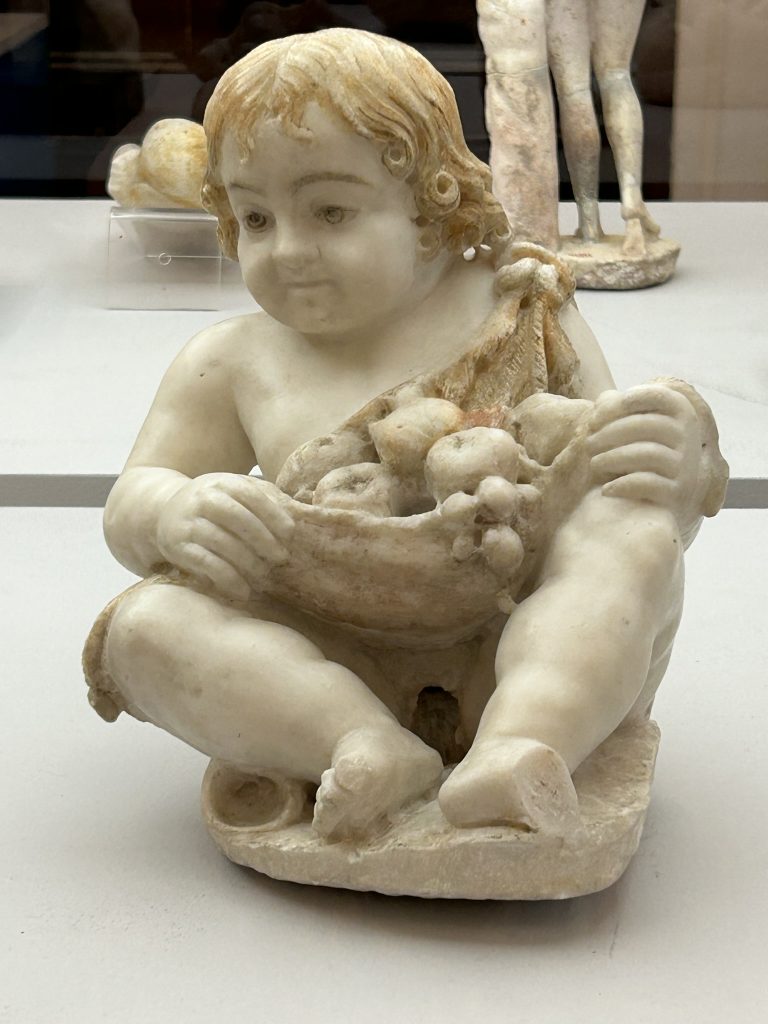
Everyday Objects
For me, a highlight of the MANN collection is the vast array of household and everyday objects that were salvaged from Pompeii during excavations that began in the late 18th century. Many of the objects were remarkably preserved–pots, glassware, small statues of household gods, combs, jewelry, cooking utensils–you name it.
The ancient Roman versions of pretty much everything humans need to cook, clean, and live in houses is on display. It turns out that Romans aren’t all that different from us when it comes to the stuff they had in their houses. Take away our electronics and indoor plumbing, and we’re left with similar objects to those used by the average Pompeii resident: wine bottles, cooking pots, jewelry, cups, combs, chairs, and the like.
Here are some particularly fine examples of the household objects salvaged from the ruins of both Herculaneum and Pompeii.
Glass Cup
Can you believe this cup is 2000 years old? I was astonished to see it in the display, but yup, according to the description. the object is a “so-called millefiori ribbon small cup” from Pompeii in the 1st century CE. It looks like something I could buy today in Venice.
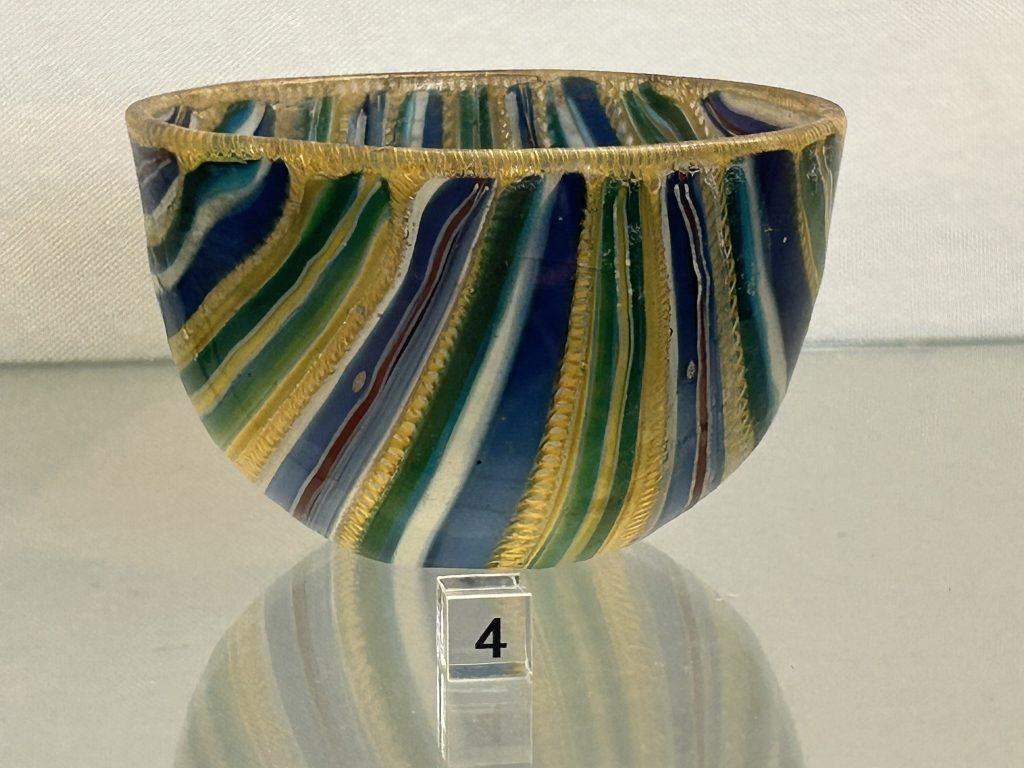
Terracotta Frog
Is this little guy not the sweetest thing? It’s a statuette of a frog made from lead-glazed terracotta. I’m not sure what he was used for, but he sure caught my eye. And he was just one of many, many such objects artfully displayed in room after well-lit room at MANN.
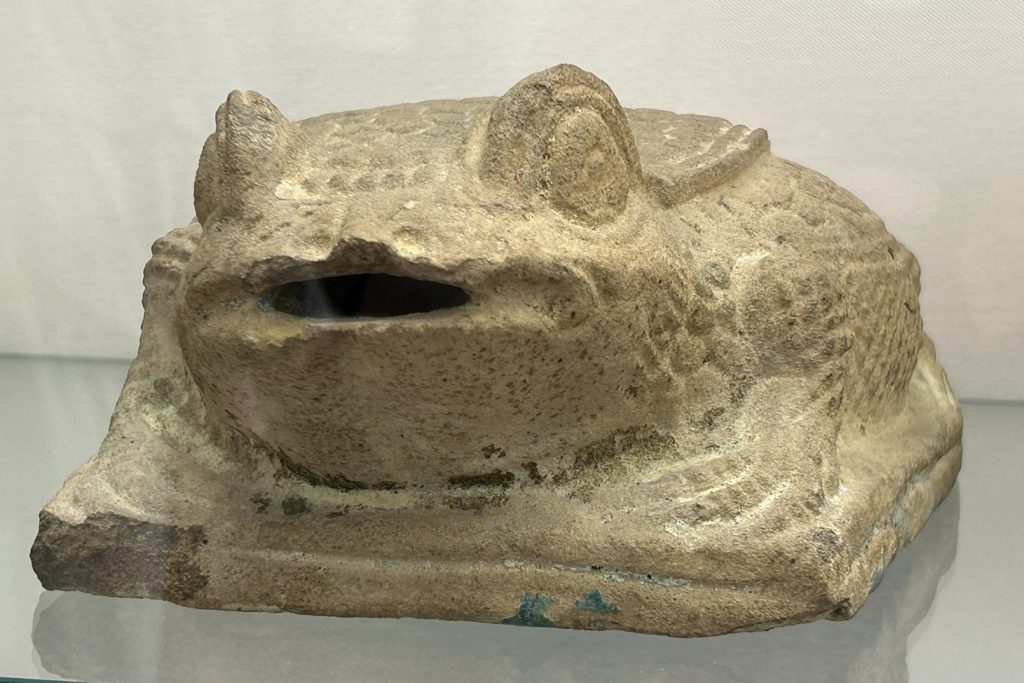
Deep Wine Cup
Look at the handiwork on this lead-glazed terracotta wine cup! It’s decorated with vegetable motifs and doves. Imagine drinking your wine out of that!
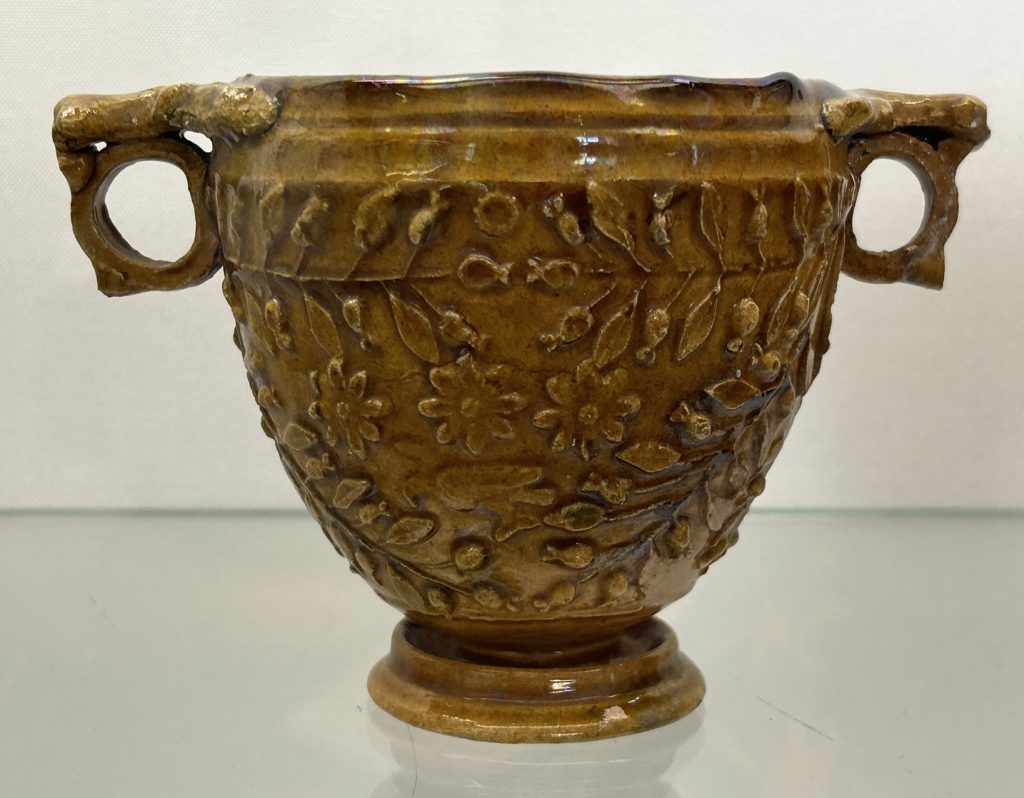
Cosmetic Jar
Ladies in Pompeii wore cosmetics just like women do today. But with plastic rather lacking, they stored their cosmetics in glass containers such as the one shown below. Again, it looks brand new! The jar is described as free-blown glass from the 1st century CE.
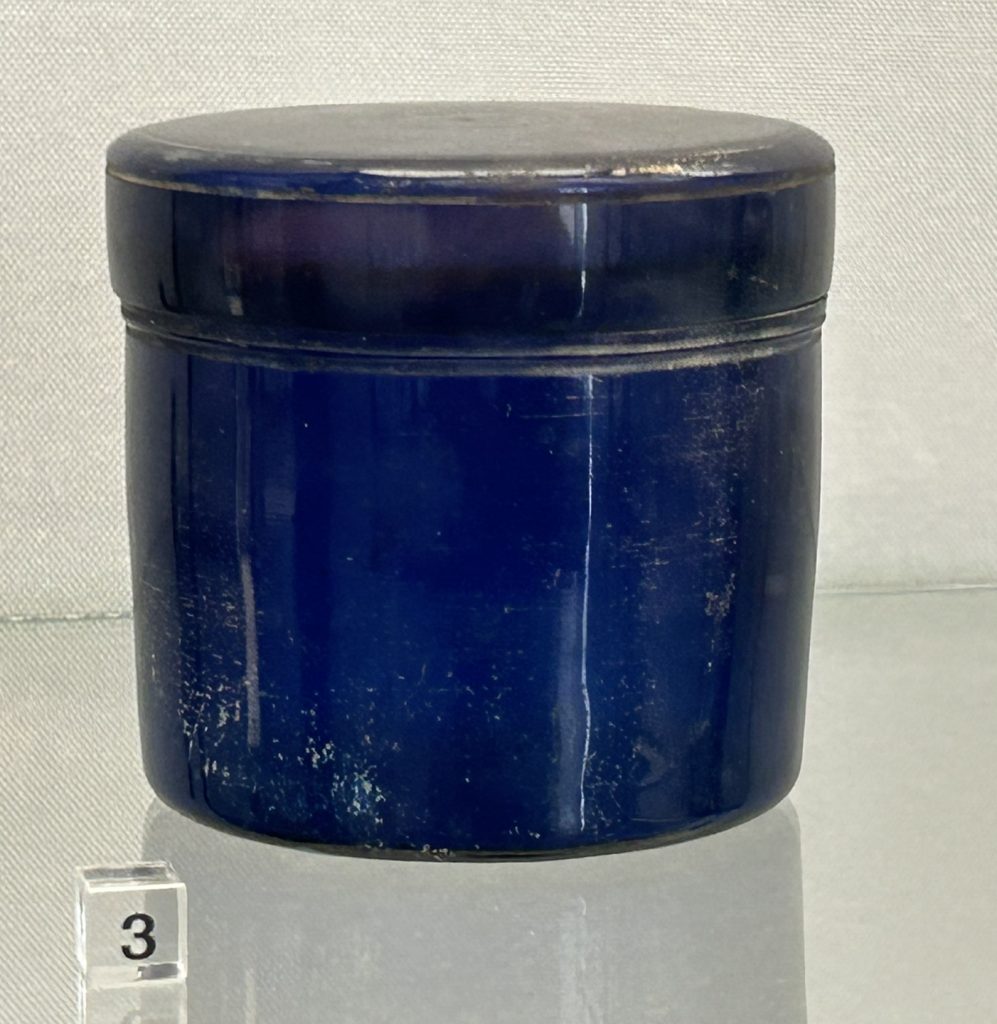
Blue Glass Pitcher
And last but not least, I have to include this perfect example of a free-blown glass pitcher. Look at the color! There were also many, many more examples of pitchers blown in darker tones as well as clear glass. I still can’t get over how they survived the blast, but I guess the ash buried things so thoroughly that they were preserved during the 1800 odd years they lay undisturbed. Remarkable!
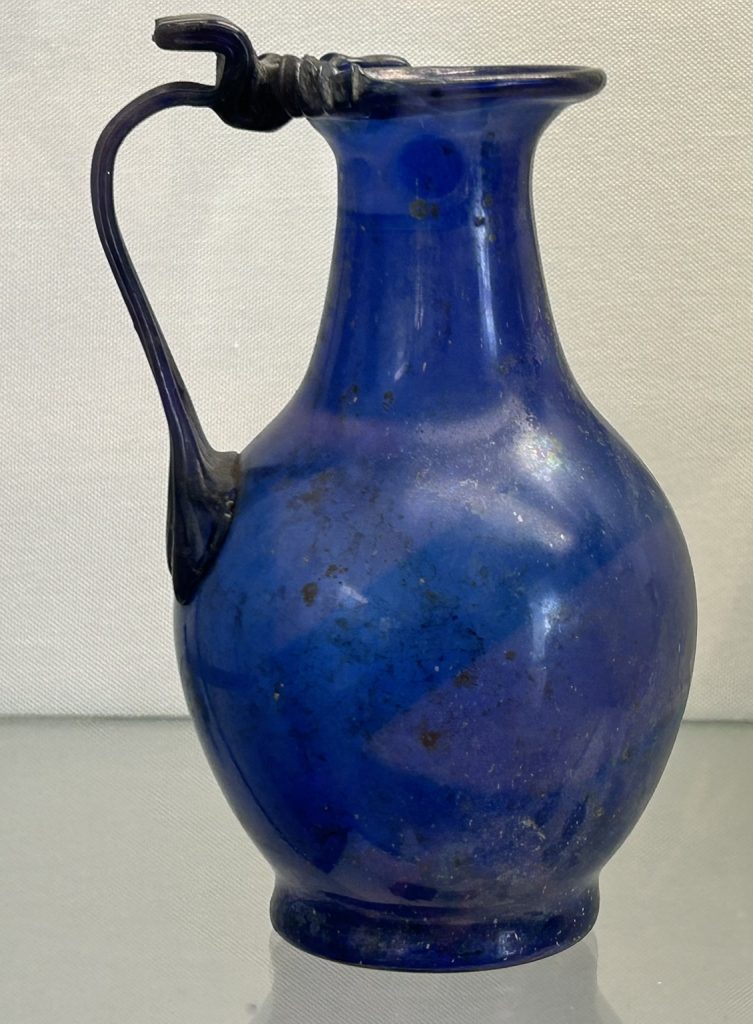
Mosaics
The people of Pompeii and Herculanean sure liked their mosaics. The floors of many houses, particularly those belonging to rich people (of which there were quite a few in Pompeii), were decorated with mosaics. The mosaics in MANN give just a taste of just how opulent the homes must have been. The intricacy of the mosaics really is breathtaking.
Zootopia Mosaic
Here is a series of three mosaics, displayed in horizontal format, but shown here in three parts to better check out the imagery. Each of these mosaics includes a bevy of wild animals–from hippos to snakes to ducks to crocodiles. What a tour de force!
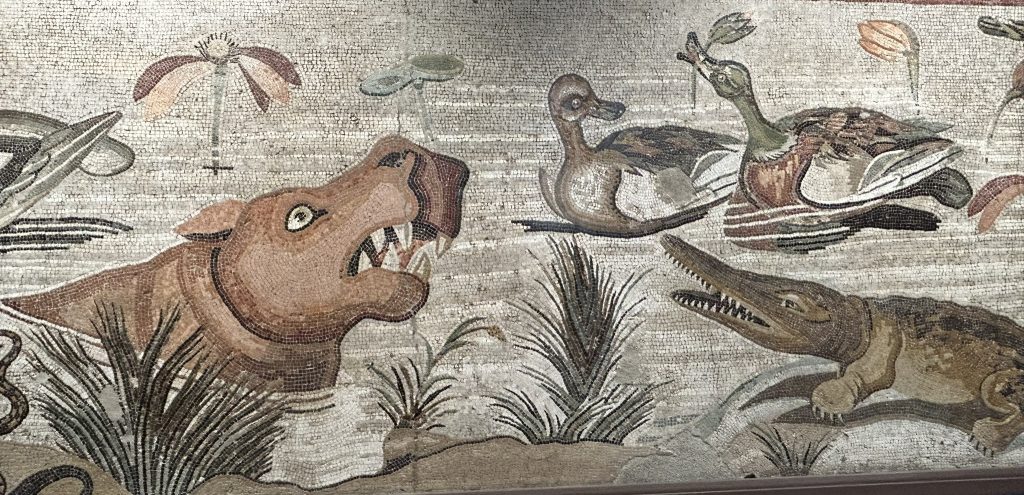
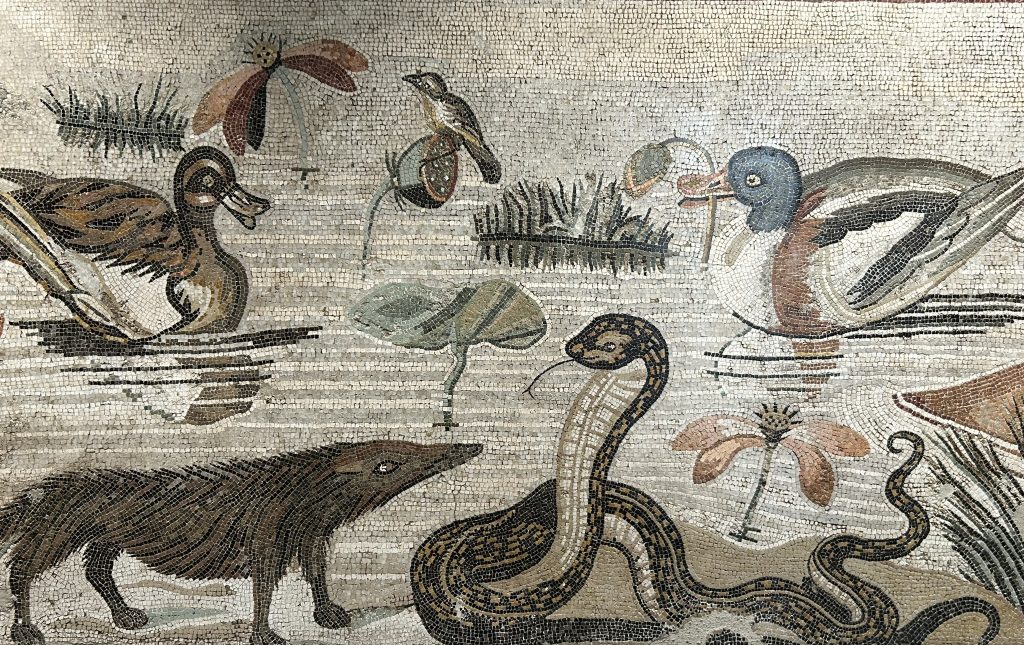
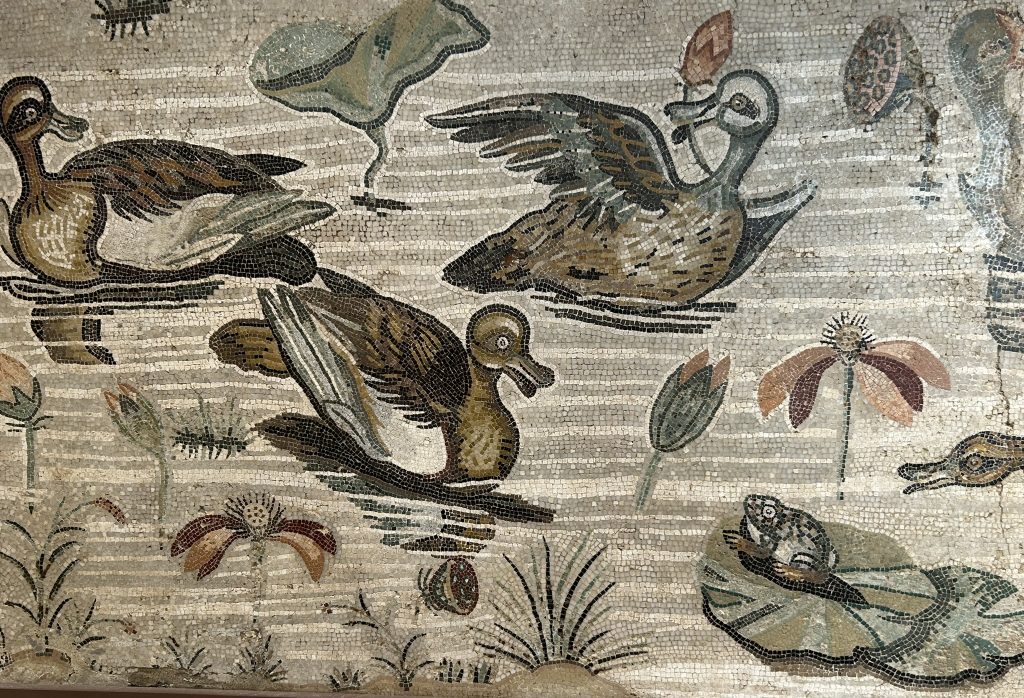
Dog Mosaic
The Romans definitely liked dogs! Here’s another depiction of a dog–this time in mosaic form. This image is very popular; it’s on various products sold in the gift shop, including bags, fridge magnets, and mouse pads. We did buy a fridge magnet at the MANN gift shop, but of Sappho (see below) not the dog!
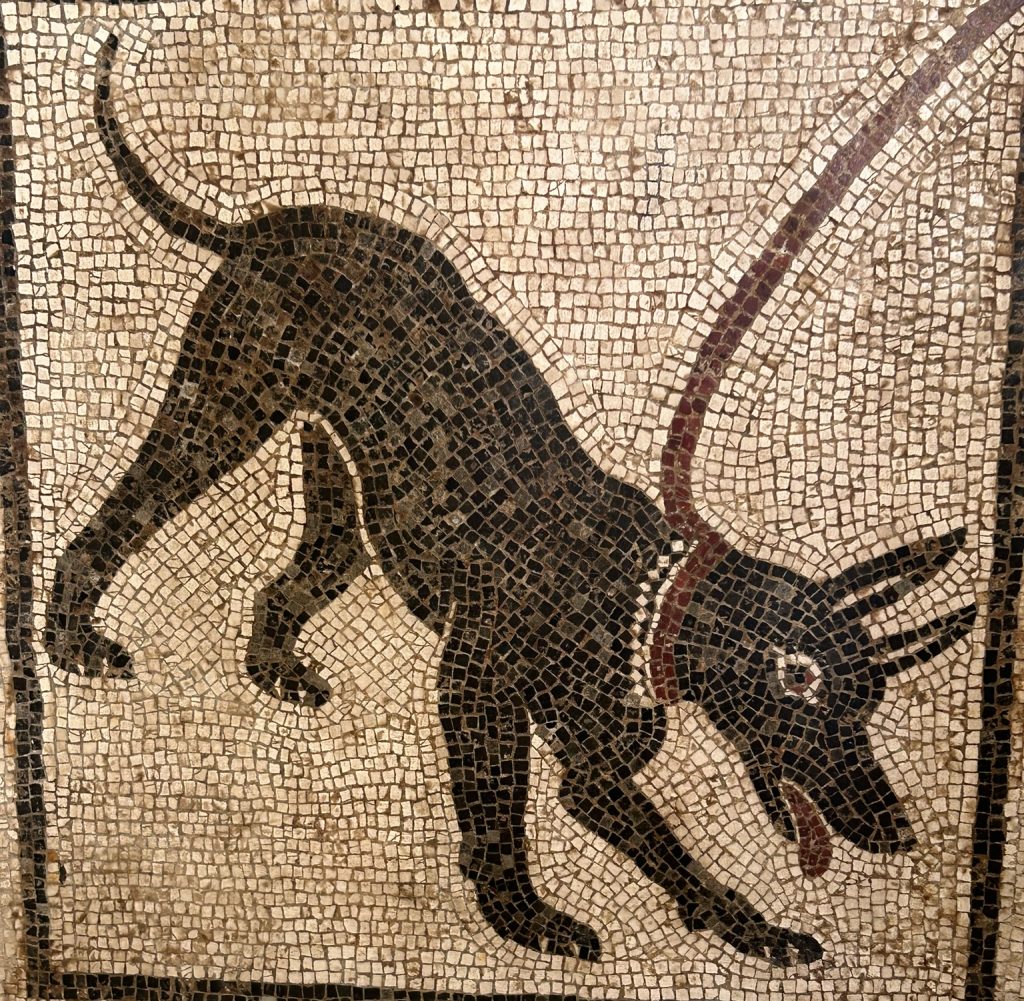
Sea Creatures
Can you imagine the imagination that concocted this delectable cornucopia of sea creatures? Wow! I particularly like the giant octopus in the middle. The mosaic also reminds me of the kinds of displays you’d see in 19th century natural history museums.
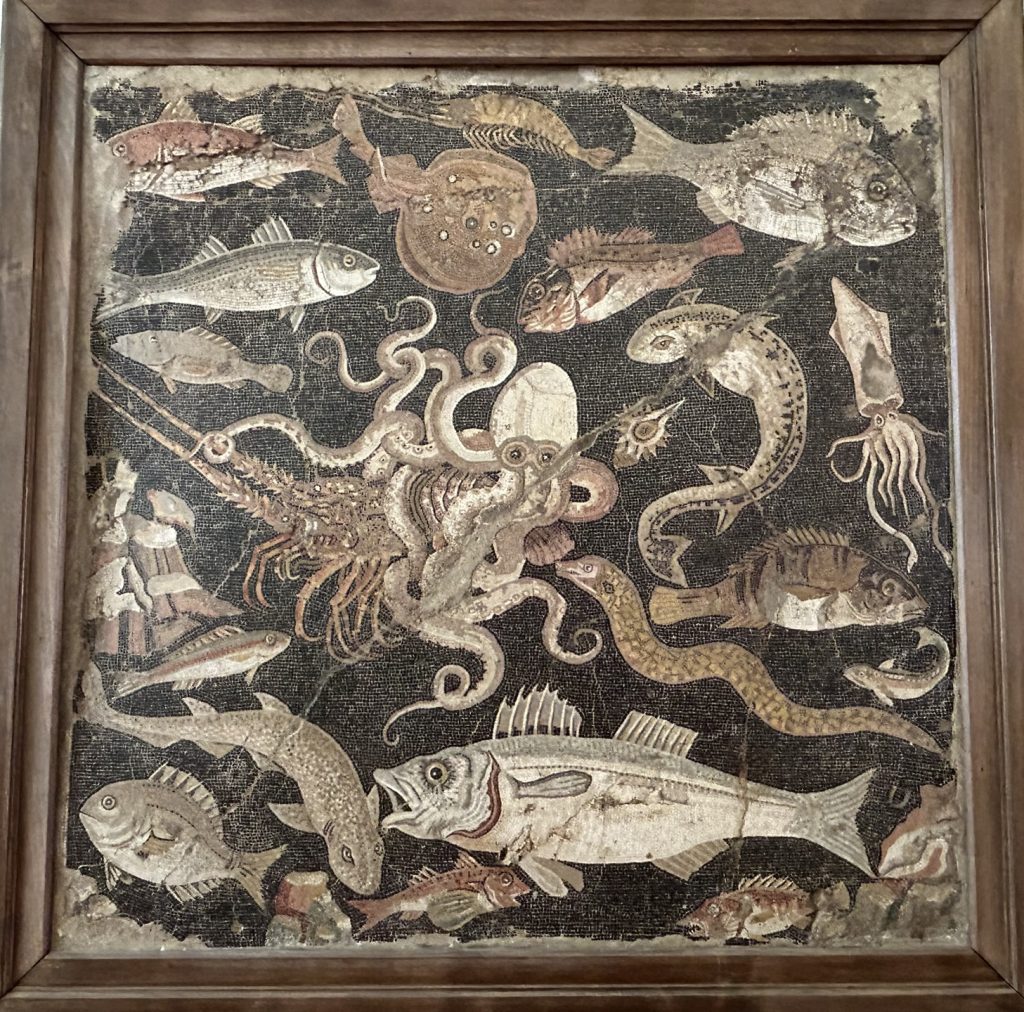
Frescoes
Paintings galore! You won’t believe how many paintings and frescoes you’ll find at MANN. This is because the Romans lavishly painted the inside walls of their villas and added painted embellishments just about anywhere there was a blank wall.
The Romans were unbelievably good painters! They’d mastered perspective and realism 1500 years before the Renaissance. So many of the paintings in MANN look like they could have been painted in the past few hundred years, particularly the gorgeous still lifes.
Here’s my best picks at MANN.
Isis & Snakes
Snakes are quite a recurring theme in the paintings in MANN. I’m not sure why that is; perhaps sea serpents were bigger and more threatening back in the day. For whatever reason, you’ll see snakes depicted in mosaics and frescoes, and included as details on pots, urns, and other objects.
This fresco, which had once graced the wall of a villa in Pompeii, shows Isis hauling the boat with the body of Osiris along the Nile accompanied by snakes lurking below the surface. Cheerful.
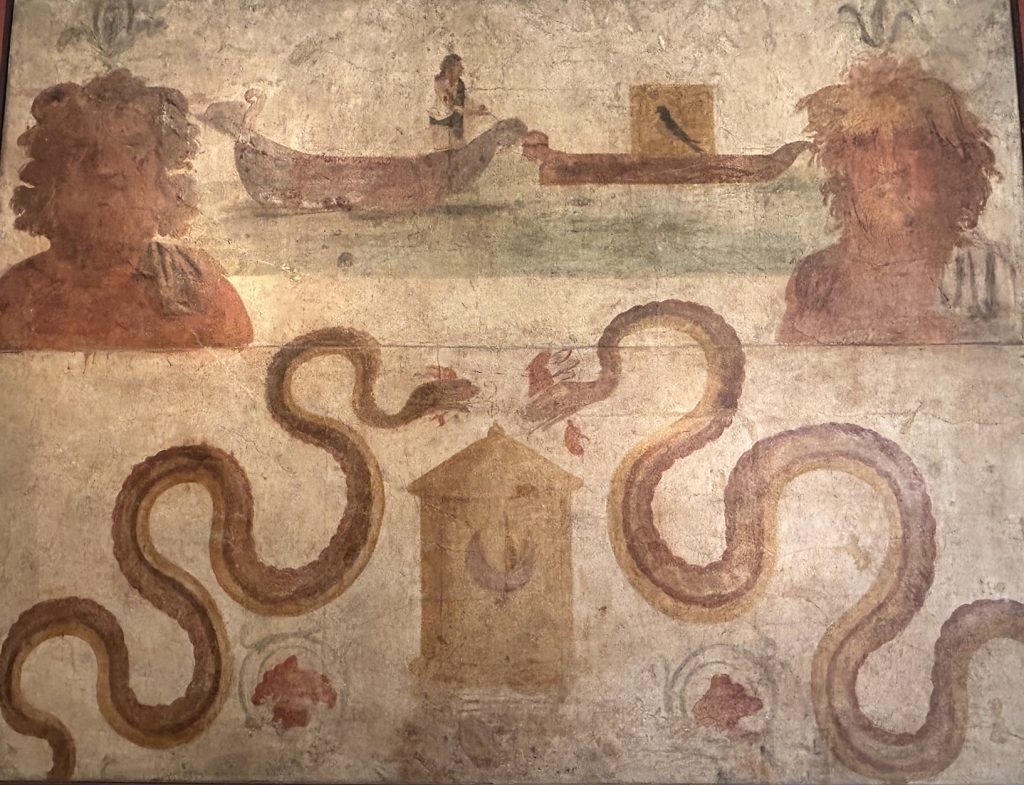
Still Lifes
I couldn’t believe the quality and quantity of still life paintings at MANN. The realism truly is incredible. I have a soft spot for still lifes (see my post about the Rijksmuseum in Amsterdam where some of my fave still lifes are exhibited). I never knew that the ancient Romans were so adept at creating them.
Here are two still lifes–one of dead birds and mushrooms, and the other of a bunny with onions.
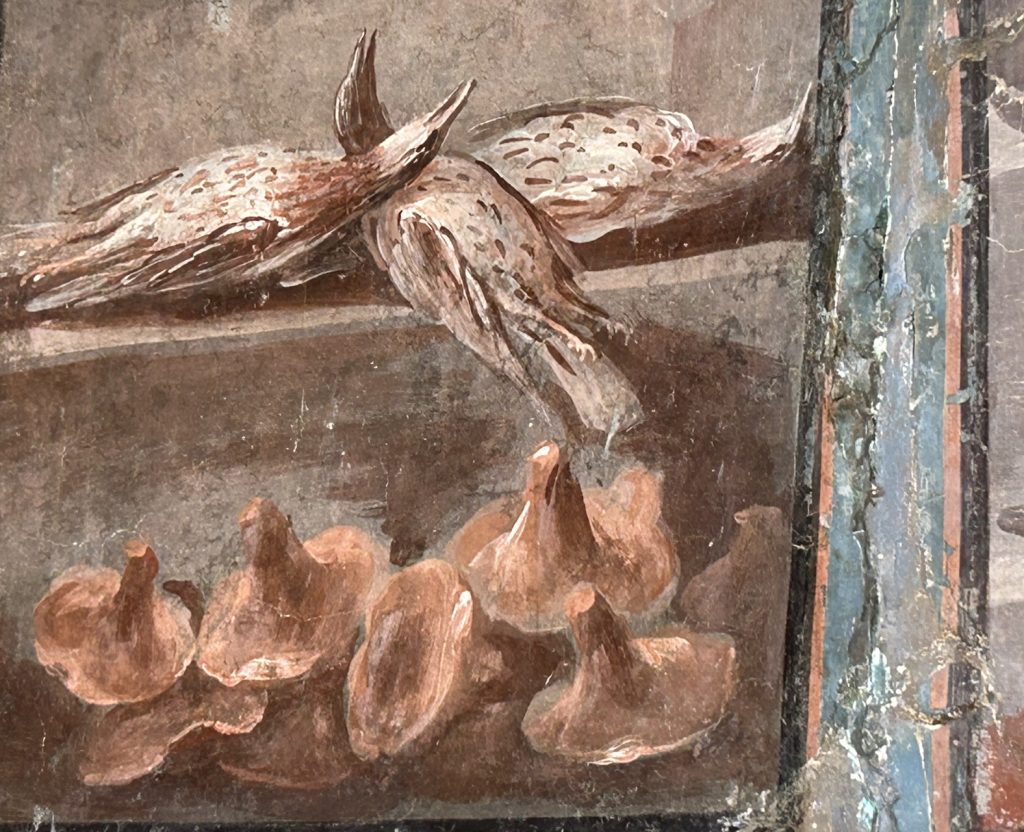
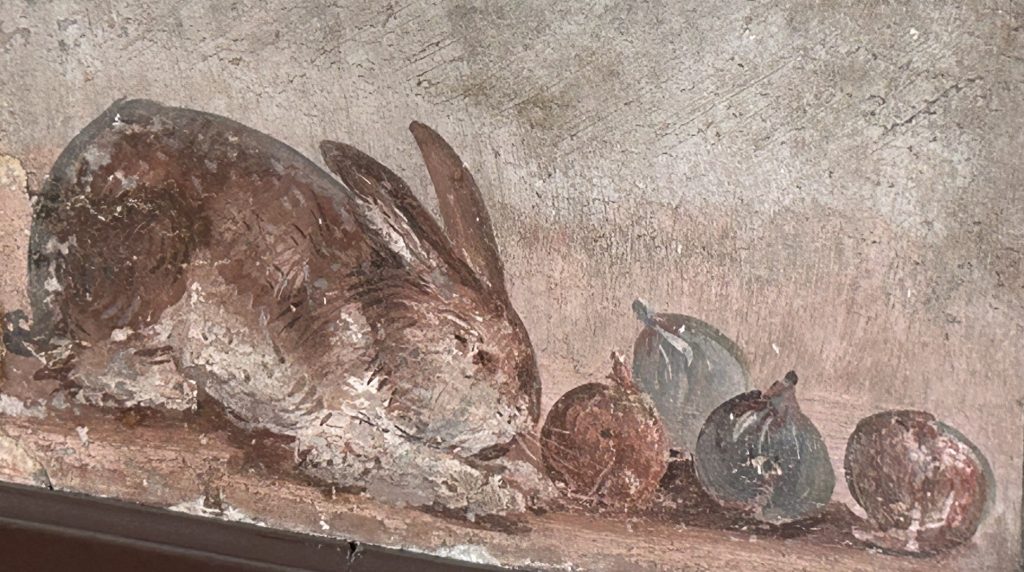
Portraits
MANN includes several portraits of Romans in its collection. One of the most famous is the portrait of the baker Therentius Neo and his wife. Don’t they look contemporary? Walking along the streets of Naples after visiting MANN brought us face to face with several of their descendants!
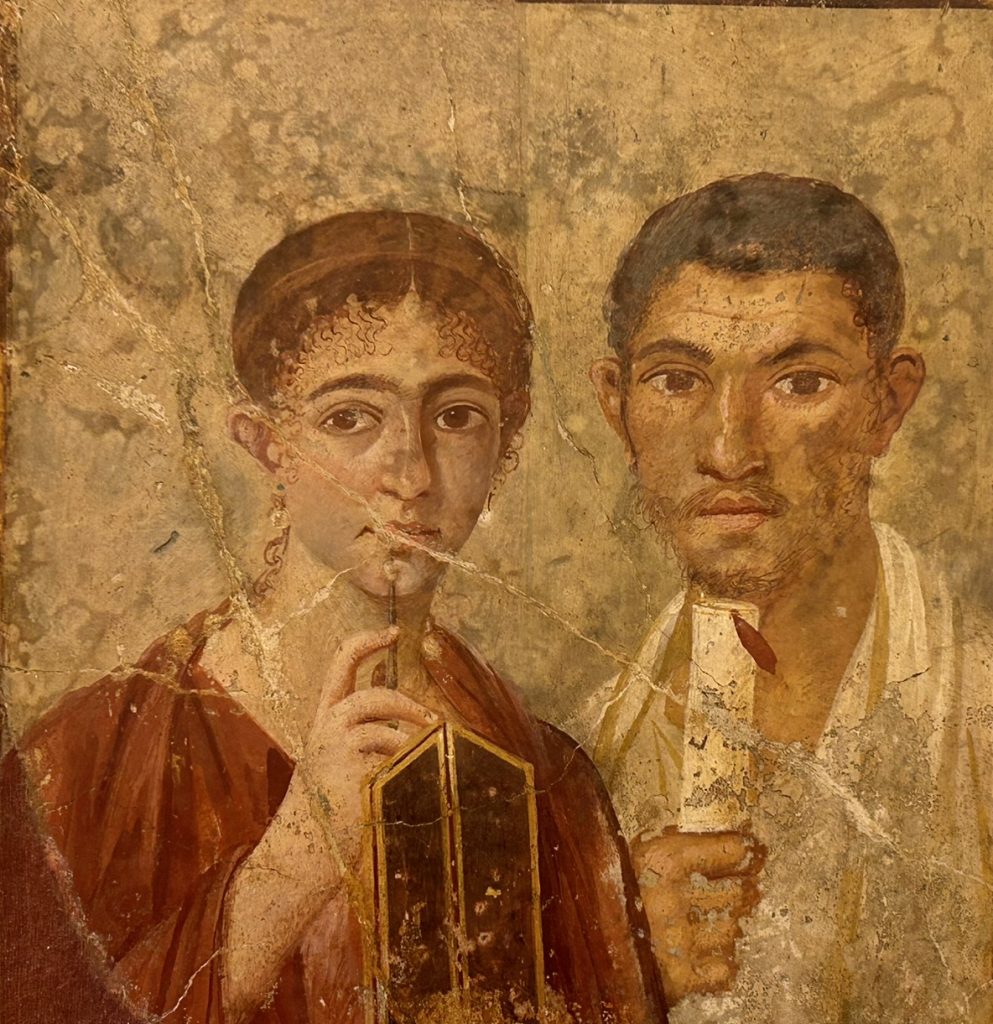
Here is another very famous portrait, this one of the poet Sappho, or at least that’s how it’s billed. The truth is that we don’t know if the portrait is actually of Sappho. It’s rather a “typological” representation of a young woman holding a stylus and a wax tablet–two things the real poet Sappho would likely have.
Anyway, it’s nice to think the portrait really is of Sappho which is probably why the image is everywhere in the gift shop, including on the fridge magnet I bought.
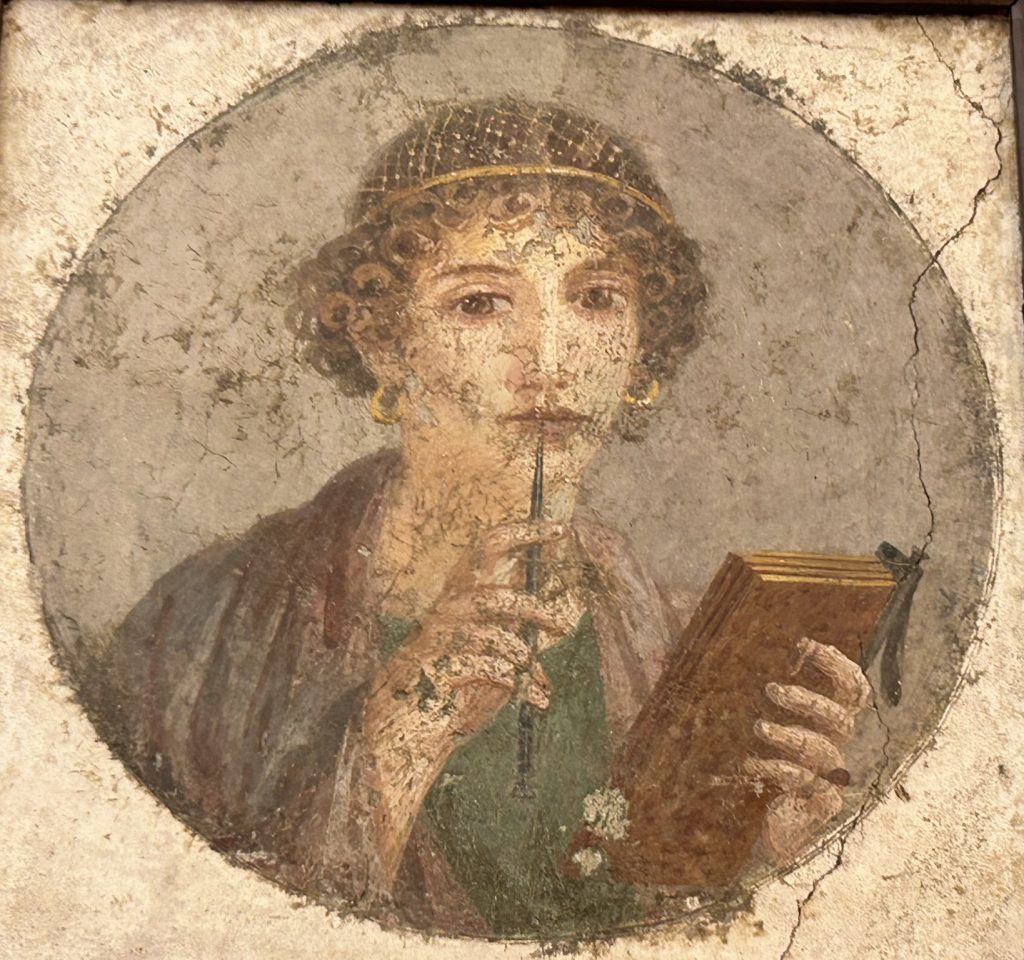
Could This be My Next Character?
And finally, I came across this lovely mosaic portrait of a young woman. According to the description, the mosaic dates to the Julian-Claudian era (27 BCE to 68 CE) in Pompeii. She’s likely pretty high born (check out the necklace). I love how she looks directly out at the viewer. If I do decide to write a novel set in ancient Rome (and I am toying with some ideas), then this mosaic could be the image of my main character!
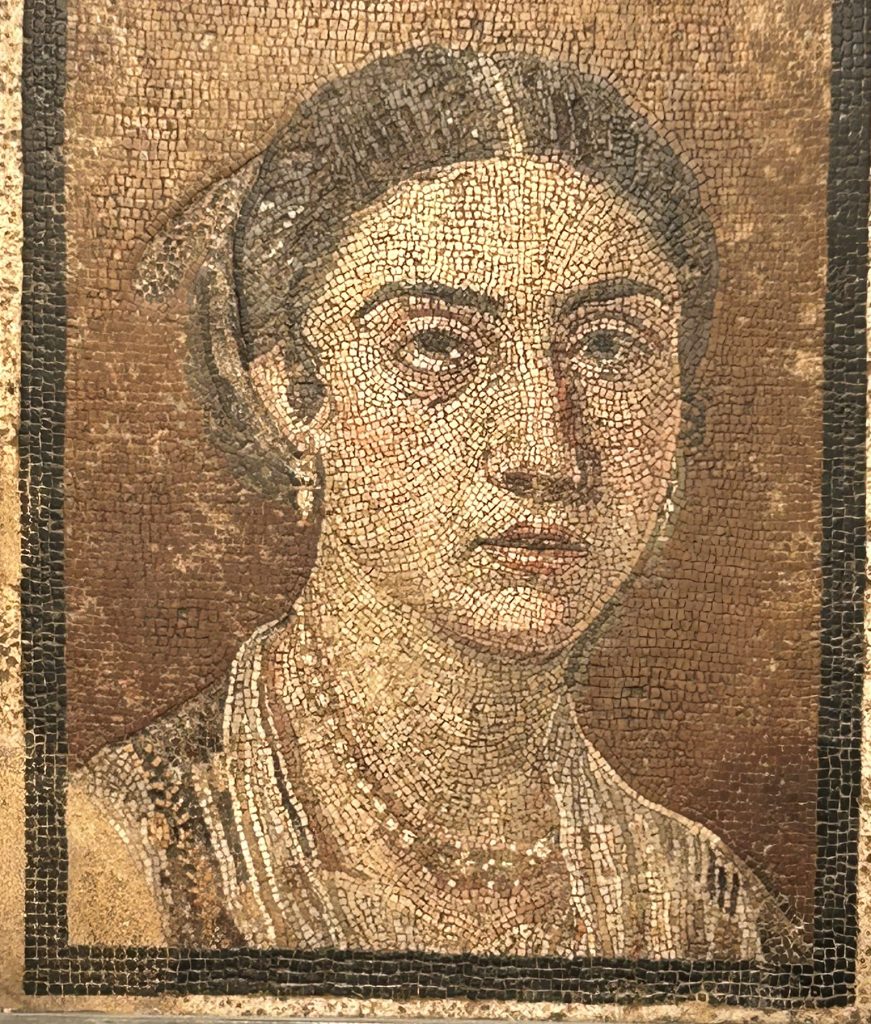
Conclusion
In this post, I’ve just scratched the surface of the MANN collection. I recommend you make time in your itinerary to visit MANN, preferably as I said earlier, before you visit Pompeii. In fact, if I had to choose between visiting Pompeii and visiting MANN, I’d choose MANN. Yes, I know that the ruins are way more famous–and they are pretty impressive. However, they truly are mobbed with visitors.
And they are BIG! If you can, visit very early in the morning or late in the evening to avoid the heat. Altneratively, visit at a time of year when temperatures are less ferocious. There is virtually no shade anywhere.
Have you visited the National Archaelogical Museum in Naples? What were some of your favorites? Share in the comments below.
Tour Options in the Naples Area
Here are some Get Your Guide tours you may wish to consider while in the Naples area. I frequently purchase tours from Get Your Guide and have yet to be disappointed. The tours they include on their website are, in my experience, reasonably priced and interesting. Full disclosure, if you click on the Get Your Guide ad below and purchase a tour (any tour), I receive a small commission. Thank you!
